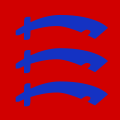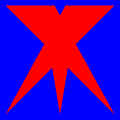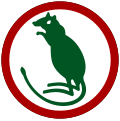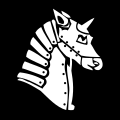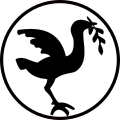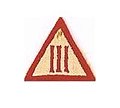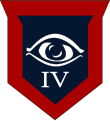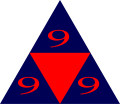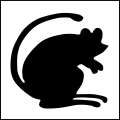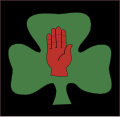World War I
During World War I the need to identify friendly troops in assaulting formations was made difficult by the new dispersion of troops across the battlefield. Beginning with the arrival of large number of Kitchener's Army troops in 1915, and widespread after the Battle of the Somme of 1916, each battalion of a division would have a particular sign of a distinctive coloured cloth patch, either sewn to the uniform jacket (on the sleeves, or the back of the tunic), or painted on the helmet. [1] These distinguishing marks, known as "Battle Patches" were distinct from the Division signs, and were for the most part simple shapes and colours. The scheme for these Battle patches could be decided at division or brigade level or be based on regimental colours or insignia, and was in some cases continued down to company or even platoon level. This system did not prevent duplication across the divisions, a red square was worn by at least 14 battalions. [2]
In most divisions the brigade could be deduced by the shape (for example 50th (Northumbrian)), colour (for example 55th (West Lancashire)) or design theme (for example 23rd) of the patch. Few divisions had a scheme of patches that had a specific brigade patch; those divisions which had such a scheme are shown below.
Contents
- World War I
- World War II
- Infantry
- Armoured and Tank
- Post War
- Infantry 2
- Armoured
- Modern
- Armoured and Mechanised
- Infantry 3
- Supporting Arms
- Notes
- Bibliography
| 8th Division [3] | |  |  | 23rd, 24th, and 25th Brigade patches. These patches were worn by brigade HQ staff only, others wore battalion specific patches. |
| 20th (Light) Division [4] |  |  |  | 59th, 60th, and 61st Brigade patches. These patches were worn by all in the brigade on both sleeves with the infantry battalions wearing a number of bars under the sign to indicate seniority. |
| 31st Division [5] |  |  | 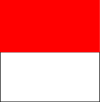 | 92nd, 93rd and 94th Brigade patches. These patches were worn by all in the brigade on the back below the collar. Battalion signs were worn on the sleeves which could also be used to deduce the brigade. |
| 32nd Division [6] |  |  |  | 14th, 96th and 97th Brigade patches. These patches were worn by all in the brigade on the sleeves, with the infantry battalions adding bars below it indicating seniority, the same in each brigade. |
| 41st Division [7] |  |  |  | 122nd, 123rd and 124th Brigade signs. These were not worn in the uniform, but used on sign posts and vehicles. The infantry battalions used numbers (or letters) in the sign as further identification. |
| 74th (Yeomanry) Division [8] |  |  | 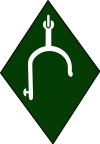 | 229th, 230th, and 231st Brigade patches. These patches were worn on the right arm, battalion patches (when present) on the left. |
More examples can be seen for the 38th (Welsh) divisions, the 146th, 147th and 148th brigades.























